Trinidad/Canada | Our Holy Waters and Mine: The Art of Andil Gosine
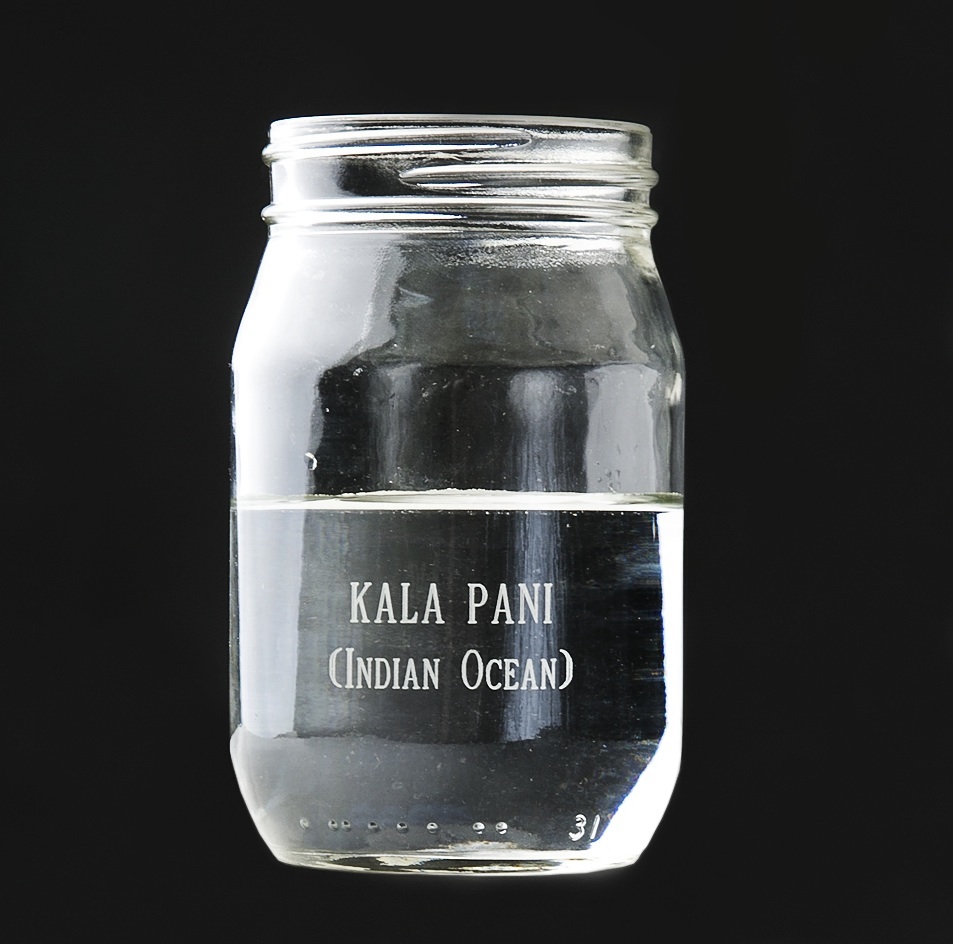 Andil Gosine. “Our Holy Waters and Mine.” 2014. Glass jar, water.
Andil Gosine. “Our Holy Waters and Mine.” 2014. Glass jar, water.
.
BY NALINI MOHABIR | THE IMMIGRANT ISSUE | SPRING, 2014
A woman on a mission, I promised my Pua (aunty) in Berbice that I would bring the Ganges to her. In Varanasi, I stood by the sacred river. A childhood version of myself, a girl with long hair in two braids, waded in to scoop up the water. With ritual significance, we exchanged rupees for a green pop bottle of holy water. She risked the polluted waters daily, for the benefit of the diaspora who desire a personal blessing from far-away long-ago India, contained and transported into the present.
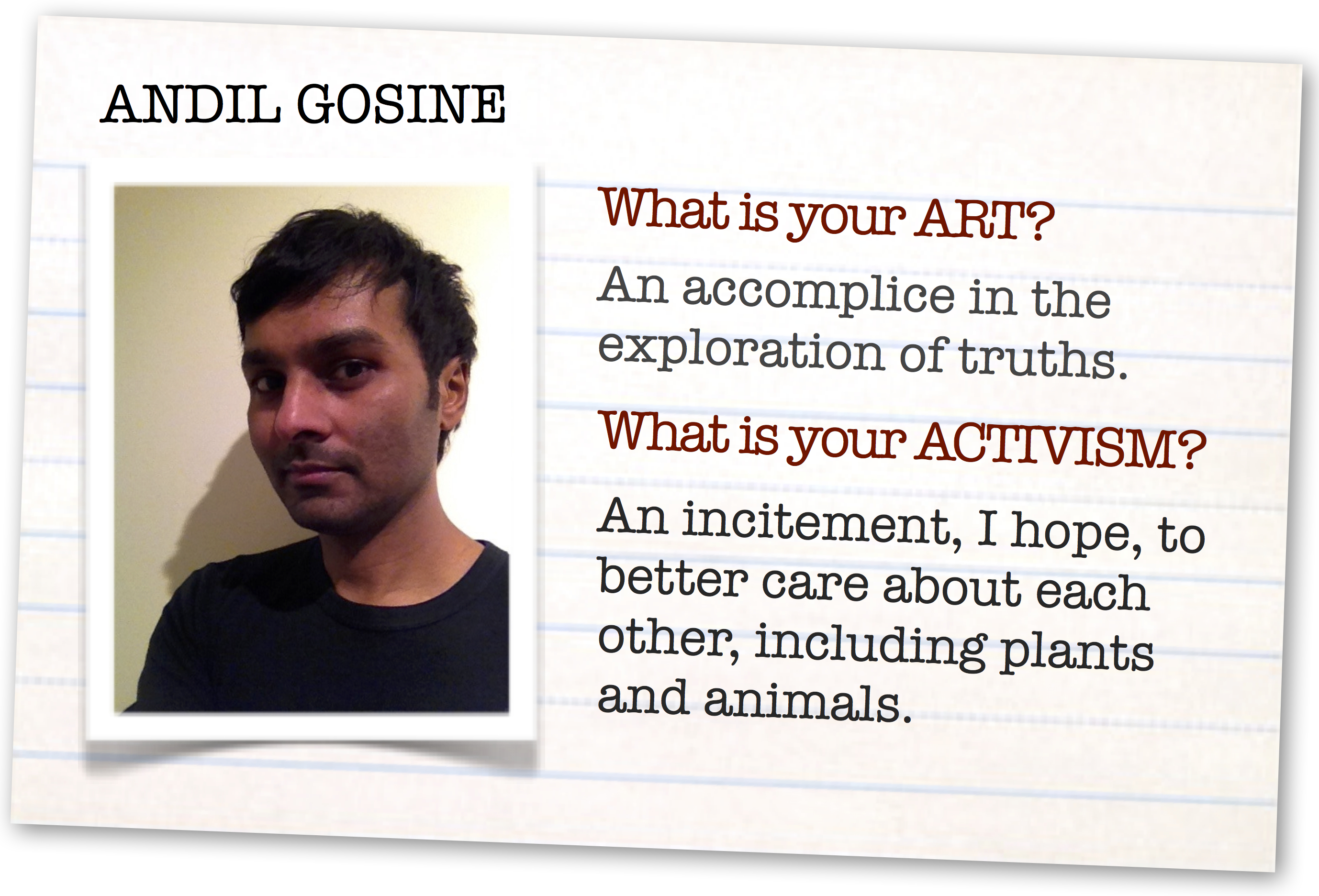 I cannot help but recall this memory when viewing the work of Andil Gosine. From George Village in the south of Trinidad, Gosine migrated to Canada with his parents as a child, and now resides between the pull of Toronto and New York. Like his life, his work is in motion, between spaces of desire, given meaning through the histories in which he walks his way in the world—as an Indo-Caribbean diasporic man.
I cannot help but recall this memory when viewing the work of Andil Gosine. From George Village in the south of Trinidad, Gosine migrated to Canada with his parents as a child, and now resides between the pull of Toronto and New York. Like his life, his work is in motion, between spaces of desire, given meaning through the histories in which he walks his way in the world—as an Indo-Caribbean diasporic man.
Gosine’s most recent piece, hosted by the Queens Museum in New York city, puts his work in conversation alongside other notable Indo-Caribbean artists, including filmmaker Ian Harnarine, writer Gaiutra Bahadur, and poet Rajiv Mohabir, together in “Coolitude: An Afternoon of Indo-Caribbean Art and Literature” (March 29, 2014). The borough of Queens has been a haven for newcomers of which Guyanese make up the second largest group. For the audience that spilled out beyond available chairs, there must have been a deep satisfaction and pride of place. The name of the event, “Coolitude,” honors the bittersweet poetics of reclaiming in-between spaces of crossing, as found in Khal Torabully’s philosophy of the same name.
“It is impossible to understand the essence of coolitude without charting the coolies’ voyage across the seas. The decisive experience, that coolie odyssey; left an indelible stamp on the imaginary landscape of coolitude.”
—Khal Torabully, 1996 ¹
This was a unique coming-together of talent in the Indo-Caribbean diaspora, in search of new imaginings that respond to the complications of history. In conversation, Gosine pointed out that it is only in recent years Caribbean artists could pursue artistic practice professionally. In the past, even for popular Calypsonians, it was often a secondary career. Echoing the sentiment of another Indo-Caribbean artist, Bernadette Persaud, he says: “In the Caribbean, Indian art is seen as folk art, as if the community does not have the potential for high art.” This is part of what he views as the psychic legacy of indentureship, a system of involuntary labor in which Indians from the sub-continent were shipped to plantation colonies around the world: “You have to prove yourself in labor, and we are still trying to prove our humanity in a basic way.”
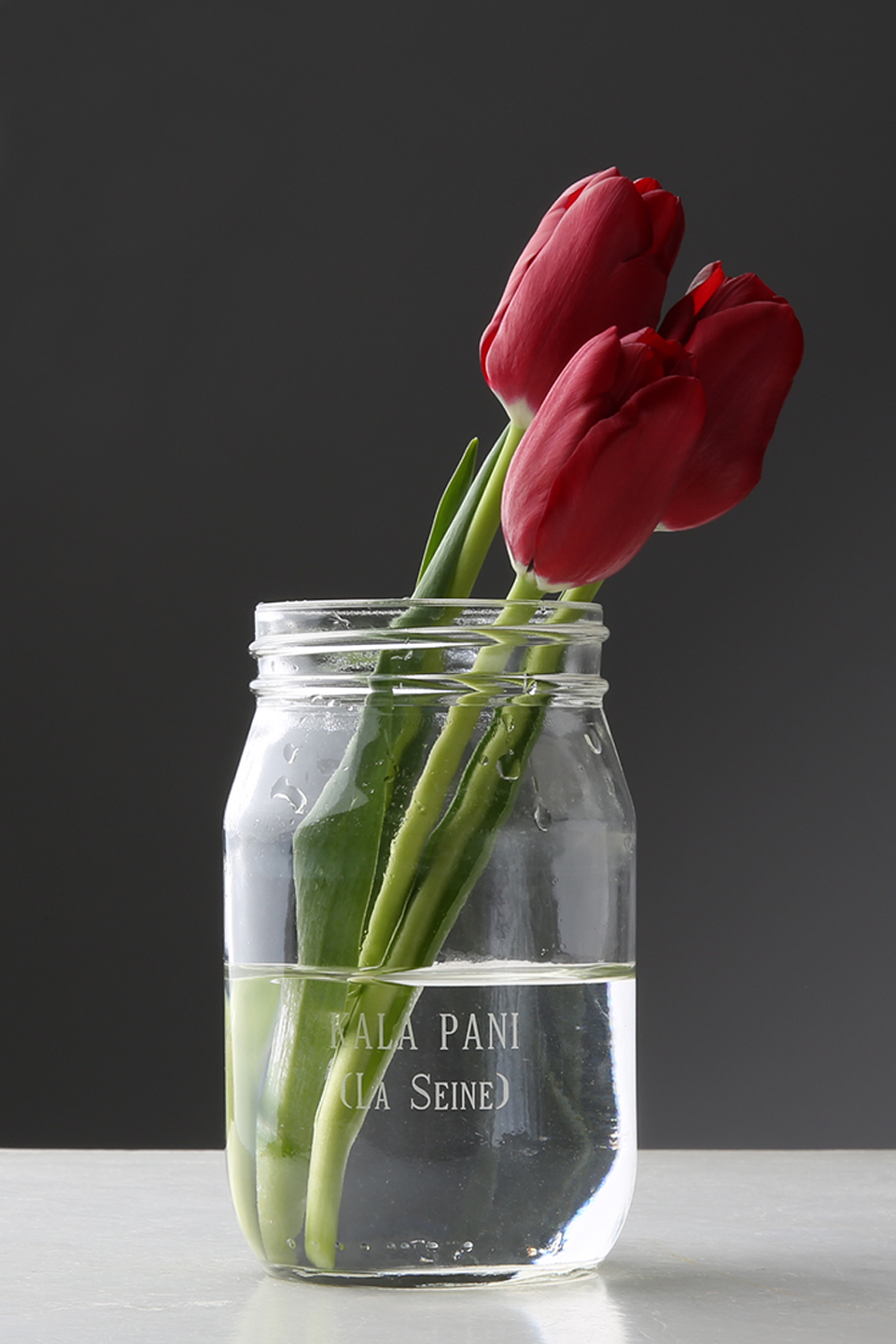 Andil Gosine. “Our Holy Waters and Mine.” 2014. Glass jar, water.
Andil Gosine. “Our Holy Waters and Mine.” 2014. Glass jar, water.
While all of humanity struggles with a sense of dignity and self-worth, there are specific and continuing inflections to our indentured history, Gosine notes. Recalling the vast distances traveled by would-be cane cutters, his performative and collaborative piece, “Our Holy Waters and Mine” takes us on what is at once a collective and personal journey. On stage, Afro-American surrealist artist Sur Rodney Sur, holds a humble lota (vessel) and a silver bucket of water. Gosine walks over slowly with his jahaji bundle (similar to the bundles emigrants carried on to the indenture ships). He slowly unwraps it, and places the contents on the floor: two sets of six mason jars, all engraved with the phrase kala pani (black waters), which has come to symbolize the indentured ocean crossing. Half the jars are engraved with the names of bodies of water between India and the Caribbean (a shared history), and the other half with the waters by which Gosine has lived (an individual biography). Sur Rodney uses his lota to fill the jars, while one mantra, “Our Holy Waters Are Not the Ganges” morphs into another noting a sequence of migration:
Bay of Bengal (Kala Pani)
Indian Ocean (Kala Pani)
Atlantic Ocean (Kala Pani)
Caribbean Sea (Kala Pani)
Berbice River (Kala Pani)
Gulf of Paria (Kala Pani)
.
Lake Ontario (Kala Pani)
The Thames (Kala Pani)
Rio Manzanares (Kala Pani)
La Seine (Kala Pani)
Potomac River (Kala Pani)
Hudson River (Kala Pani)
The mantra begins with Gosine’s voice, and during the last iteration of the chant, the timbre of artist Lorraine O’Grady’s vocals enters, encapsulating the knowledge of her eighty years and providing a powerful reverberation of time. While this occurs, a series of images of black and brown bodies standing in front of a backdrop of cane fields is projected overhead, subtly underscoring a creolized experience. In one of the jars, (labelled La Seine), Gosine places flowers, emblematic of puja (Hindu prayer) rituals, but also symbolizing his long-lasting relationship with a French man, and the significance of the relationship’s end. Here he credits O’Grady as a kindred spirit and mentor, teaching him to have the courage to invoke the personal (“the desperation of heart break”), within the contours of community experiences. Although, as Gosine observes, in many ways these are universal experiences—we all feel love and desire—emotions can also be a confrontation with our histories. Others may empathize; he says: “You work hard, make sacrifices. Your servitude becomes who you are; it permeates the personal space.”
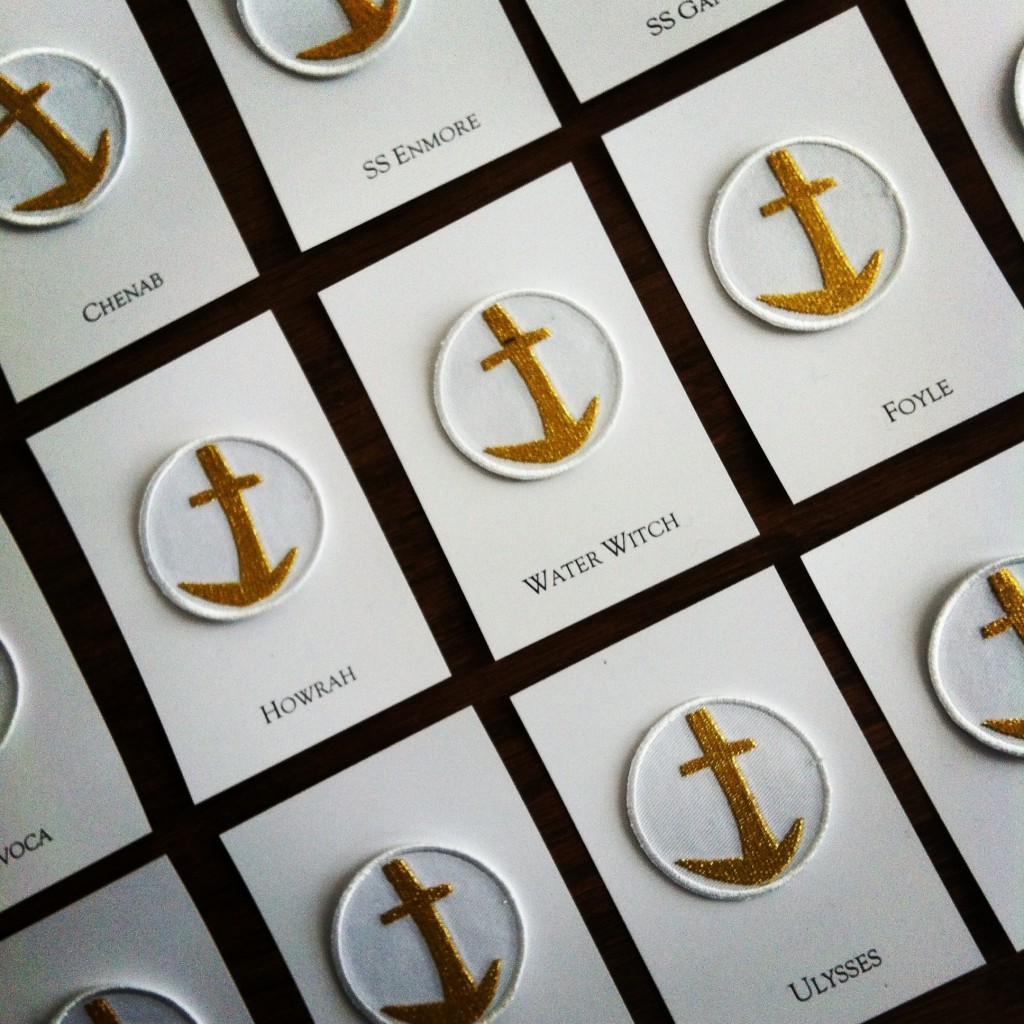 Andil Gosine. “Memory Anchors.” 2013. Embroidered gold and white cotton on white paper.
Andil Gosine. “Memory Anchors.” 2013. Embroidered gold and white cotton on white paper.
Accompanying the performance, Gosine has designed an anchor, based on a tattoo worn by his Ahji (grandmother), a memory of ocean crossing engraved on the body. He reproduced multiple embroidered copies in gold thread, with each anchor representing a voyage (one anchor per each indenture ship that sailed, its name underneath). Rivers are also invoked in the names of ships (e.g., The Foyle, a river in Scotland; The Chenab, a river in India; The Howrah, a bridge over the Hooghly River). Collectively the ships represent indentured migrancy, the vessels which carried ancestors to the region. Personally, each individual ship holds meaning as a genealogy. Kinship ties (jahaji bhai and bahin) refer to brothers and sisters of the ship, those whose travels were contained in the same vessel and are now linked by memory.
Through the mason jars, we are confronted with deliberately depersonalized objects, abstractions of archival photos or ship names written on our ancestors’ emigration passes. Mason jars are common household objects, now commodified into “retro cool” (found in the trendy bars of New York and Toronto). Our communities of origin may not collectively be free of back-breaking labor, but here in the diaspora we can knowingly access these props of faux downward mobility. But we risk forgetting the past. This is why, when Gosine claims these functional jars (similar to the one his Ahja kept, filled with Ganges holy water), he is compelled to create a re-labelled identity, assigned meaning by that which is most meaningful to him. He is best by the water, symbolized by the tulips in La Seine. It is an identity that flows from the past, but is also fluid. Although crossing the kala pani has been interpreted as a traumatic rupture, in Gosine’s art, we see the subtleties that extends the personal, interwoven with a transoceanic past. In other words, his work becomes a confrontation—and meditation—with how we can make memory meaningful to each of us.
Notes
1. Torabully, Khal. “The Coolies’ Odyssey,” The Unesco Courier, Paris, October 1996, p. 13.
♦
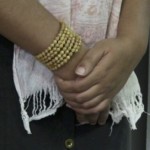 Nalini Mohabir is a postdoctoral researcher at York University, whose scholarly, personal, and ancestral journeys are entwined with the (Indo-)Caribbean diaspora.
Nalini Mohabir is a postdoctoral researcher at York University, whose scholarly, personal, and ancestral journeys are entwined with the (Indo-)Caribbean diaspora.
OF NOTE Magazine is free to readers, free of advertising, and free of subscriptions—all made possible by generous supporters like you. Your tax tax-deductible gift will help us continue to feature innovative and emerging global artists using the arts as tools for social change. OF NOTE Magazine is a fiscally sponsored organization of the New York Foundation for the Arts, a 501 (c) (3), tax-exempt organization. All donations are 100% tax-deductible to the full extent of the law.


